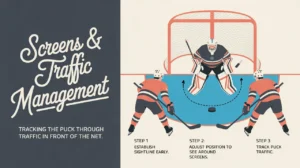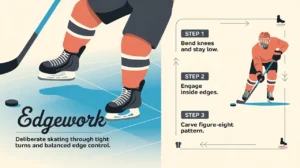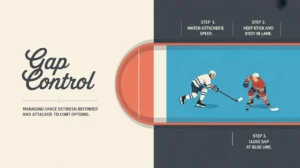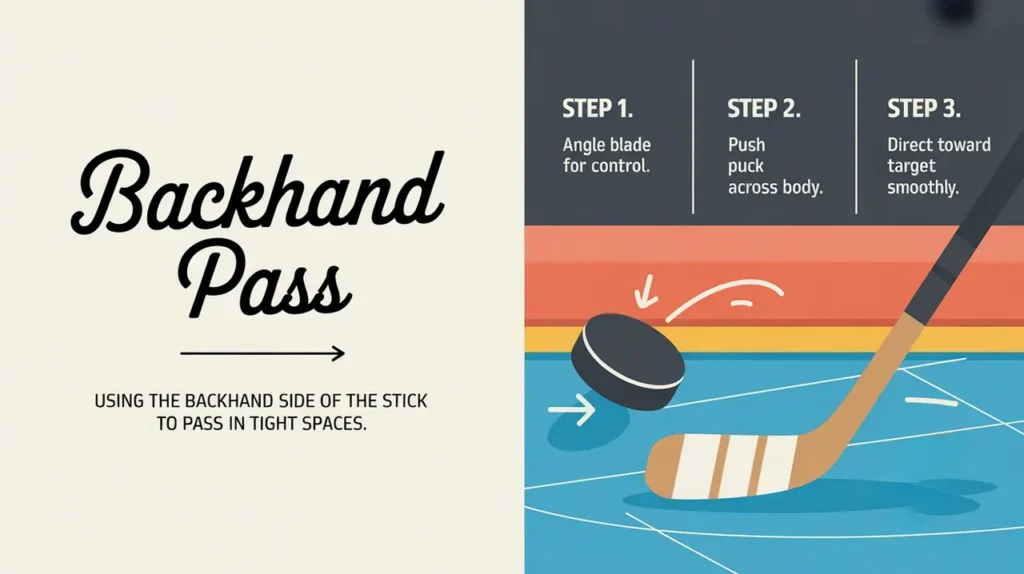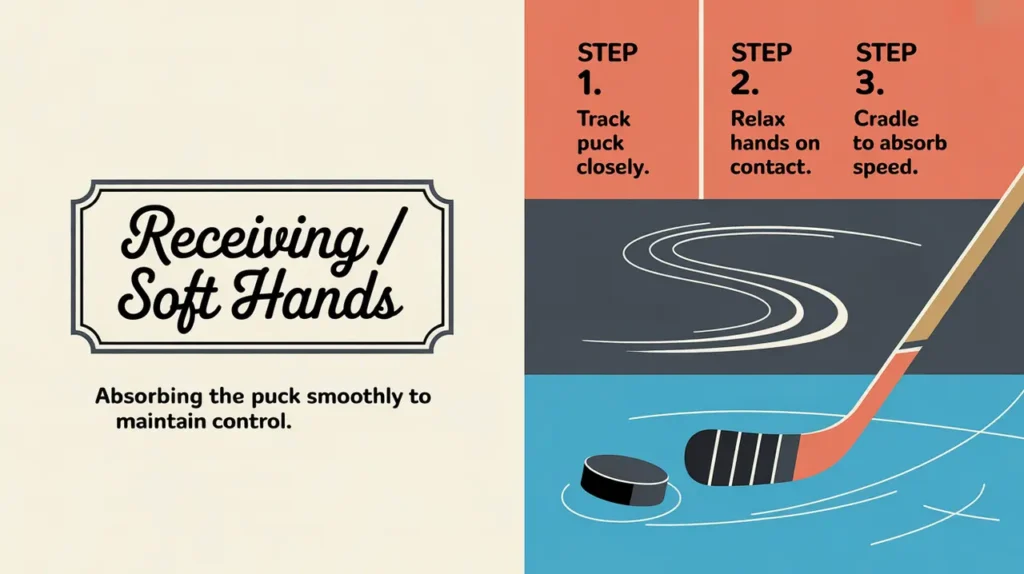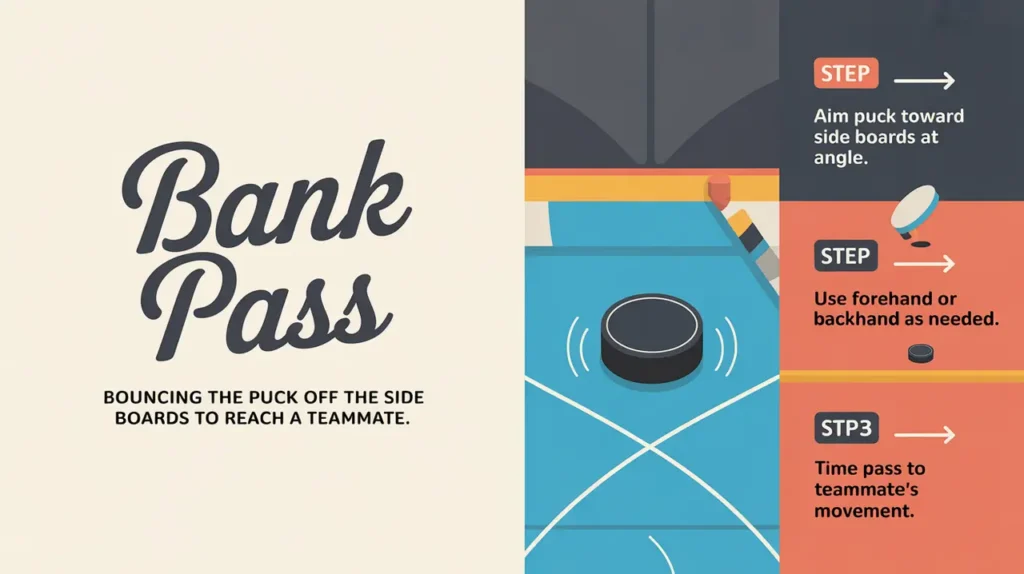Jim’s Intro to Forehand Pass
Hi folks, Jim here, the only commentator who once tried to demonstrate a forehand pass during a broadcast and accidentally sauced it into the camera operator’s coffee.
What is a forehand pass?
A forehand pass is when a player uses the front side of the stick blade to send the puck to a teammate. It’s the most common passing technique in hockey, prized for its accuracy, speed, and versatility in every zone on the ice.
How does it work?
The forehand pass depends on clean mechanics and blade control:
- Hand Position: Keep your top hand loose for control and your bottom hand positioned for leverage.
- Blade Alignment: Angle the blade slightly open to keep the puck flat and direct.
- Weight Transfer: Shift weight from your back foot to your front as you pass.
- Push or Sweep: Use a smooth, controlled push or sweeping motion to send the puck.
- Follow Through: Point your blade toward the target to guide accuracy.
- Eyes Up: Look at your target before passing, not during the release.
How do you make good decisions with it?
- Pick the Right Speed: Soft passes get intercepted; hard passes can handcuff teammates. Match your pass to the situation.
- Lead Your Teammate: Pass slightly ahead of a moving target so they can receive in stride.
- Avoid Traffic: Look for clean passing lanes to reduce turnovers.
- Use Deception: Fake a shot or look off to disguise your intentions.
- Reset if Needed: If no lane is available, regroup rather than forcing a risky pass.
How do you master it?
Mastering the forehand pass takes repetition, feedback, and situational practice. Players work on passing against boards, with partners, and through targets. Drills that focus on quick, accurate puck movement at various speeds build consistency and touch.
What does it look like when done right?
A perfect forehand pass looks crisp, flat, and on target. The puck slides smoothly across the ice, hitting the teammate’s blade in stride and setting up the next play seamlessly.
Commentator’s Corner
Jim’s Take
There’s nothing prettier than a clean forehand pass that cuts through the defense like a hot knife through butter.
Parent Tip
Reinforce proper mechanics early. Consistency with the forehand pass builds confidence in young players.
Player Tip
Work on passing at different speeds and distances. A forehand pass should feel as natural as breathing.
A Final Thought
The forehand pass is hockey’s connective tissue. Master it, and you’ll keep plays flowing, find open teammates, and turn simple touches into scoring chances.



